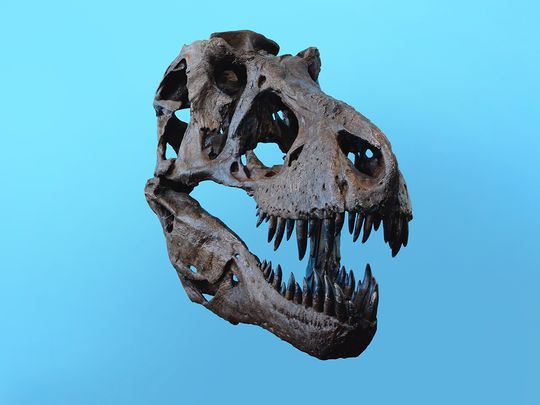
It’s been a spectacular year for science. New discoveries have been made across the board – from the cosmos, to the Earth’s creatures, to the animals that roamed the planet millions of years ago.
Click start to play today’s Spell It, where we are ‘mapping’ the most astonishing scientific discoveries of 2023.
Here are some of the most interesting revelations from the year, according to a December 2023 report in the National Geographic:
1. Ripples in the fabric of space-time
For the first time ever, scientists have detected low-frequency gravitational waves moving through the galaxy. Like ripples in water, these cosmic waves are thought to be the distant echoes of supermassive black holes billions of lightyears away. The discovery was thanks to NANOGrav, an international collaboration between colleges, research universities, national laboratories and radio observatories. The implications of these findings are massive – they show that there were far more gigantic black holes in the early universe than was previously thought. It could also help unravel details about the origins of our universe.
2. Brain decoder
In March 2023, researchers from the University of Texas at Austin, US, produced incredible work with their new artificial intelligence (AI) based system – they were able to translate a person’s brain activity into a continuous stream of text in the lab. Like a mind reading device out of a sci-fi novel, this semantic decoder picks up brain activity in response to things like images, or podcasts. It doesn’t even require a surgical implant, rather it relies on functional MRI scans. The technology relies on AI language generation algorithms, and provides new hope for people with communication impairments.
3. Largest animal that ever lived
The blue whale was relinquished to second place, this year, as the largest animal ever to grace the Earth. New analysis of fossils from an ancient cetacean, named the Perucetus colossus, show that the ancient whale was easily the largest animal to have ever existed. The gigantic animal, weighing more than 300 tonnes and measuring around 60 feet, lived in the waters off Peru nearly 37 million years ago. In comparison, blue whales, though longer at roughly 100 feet, weigh around 200 tonnes.
4. Tyrannosaurus Rex had lips
It’s time to change the image that you hold in your head, of the T. Rex. According to a March 2023 study published in the journal Science, a team of paleontologists studied modern analogues to the prehistoric animals, such as birds and reptiles, and came to the astonishing conclusion that prehistoric meat eaters likely had soft tissue that covered their sharp teeth to protect the animals’ mouths and keep their sharp teeth in top-notch condition for future attacks.
5. More known planets than ever before
In August 2023, about three decades after astronomers found the first planets outside our solar system, scientists revealed that they had discovered six new exoplanets. This pushes humanity’s count of known planets to 5,500. The discovery was made possible by telescopes such as the Transiting Exoplanet Survey Satellite (TESS) and the James Webb Space Telescope. New technology is enabling us to learn more about what lies in each of these planets. For instance, a planet that’s between the sizes of Earth and Neptune, dubbed K2-18, is thought to have a global ocean underneath its thick atmosphere.
What do you think of these amazing discoveries of 2023? Play today’s Spell It and tell us at games@gulfnews.com.



